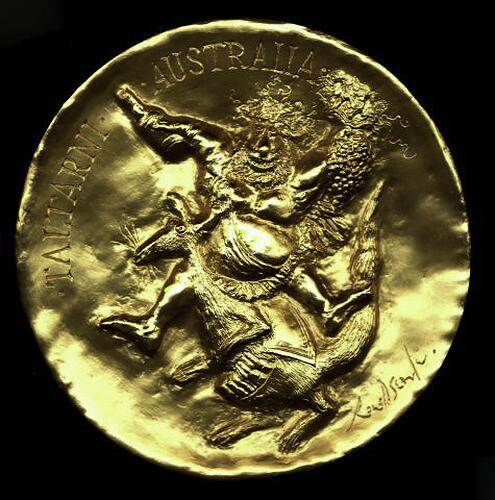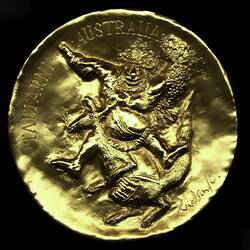Ronald Searle was born in 1920 in Cambridge, England, into a working class family. He aimed to be an artist and drew credibly by the age of five and professionally at 15, when he began to make money for Art School classes by working at a parcel packing firm. He then became cartoonist for the Cambridge Daily News, beginning a series of 195 weekly cartoons. He also continued his art classes, and in 1939 received his Minister of Education Drawing Diploma. He then enlisted in the Territorial Army as an Architectural Draughtsman, supporting himself though drawings and cartoons to newspapers and magazines for the next two years.
Searle's career was interrupted by war service. One month after he arrived in Asia, Singapore was surrendered to the Japanese and Searle spent the rest of the war as a prisoner. He was imprisoned at Changi and was a forced labourer on the Ban Pong to Burma railway. He never stopped drawing, despite witnessing and experiencing atrocities and illness, including a Japanese guard's pick axe in the back and bouts of malaria and beri beri. His art sustained him.
Searle returned to Cambridge in October of 1945 and soon exhibited his war-time drawings. In 1946 he married the editor of Lilliput, Kaye Webb, and published Forty Drawings, a book of his art. England wasn't ready for the power of Searle's images and the book was a commercial failure, as was another book, Le Nouveau Ballet Anglais, published in France.
Searle made several forays into book illustration, but his cartoons were paying the bills. In 1948 he finally found some success with Hurrah for St Trinian's, his first collection of cartoons. By 1950 he was entrenched as the illustrator for Punch's theatre column, had been featured in an issue of The Studio, and been sent to work in Paris with his wife. In a most remarkably short time, Searle had become one of the foremost illustrators in England.
Searle started his own publishing company, Perpetua Books, to collect his cartoons into book form. Merry England, etc. and The Rake's Progress were among the first published. In 1956, only ten years after starting his post-war career, he became a member of Mr. Punch's Table and one of their highest-paid staffers. He stayed for five years, during which time he received offers from the United States. Among the first he accepted was an animated film, 'Energetically Yours', for Standard Oil. He became the first non-American illustrator to receive the National Cartoonists Society's Reuben Award in 1960. Life magazine sent him on assignment to Jerusalem for Adolf Eichmann's trial.
In 1961 Searle left a note for his wife and twins and departed for Paris for a new professional and personal direction. He took up with a new partner, Monica, who he later married, and began a series of artworks. His style was changing - the pen nib was spreading and splotching in new, angular ways and the satire had a harder and more bitter bite.
Lighter assignments did continue during the Sixties. He designed the animated opening sequences for the films 'Those Magnificent Men in Their Flying Machines and 'Monte Carlo or Bust', covers for TV Guide, travel illustrations for Holiday and art for The New Yorker.
In 1973 Searle became the first non-French living artist to exhibit at the Bibliotheque Nationale. In September of 1975, the he and Monica decamped from Paris to a new, still more private life, in Haute-Provence. He subsequently designed commemorative medals for the French Mint.
References:
Bud Plant Illustrated Books website http://www.bpib.com/illustrat/searle.htm
More Information
-
Keywords
-
Localities
Cambridge, England, United Kingdom, Singapore, Paris, France
-
Authors
-
Article types

